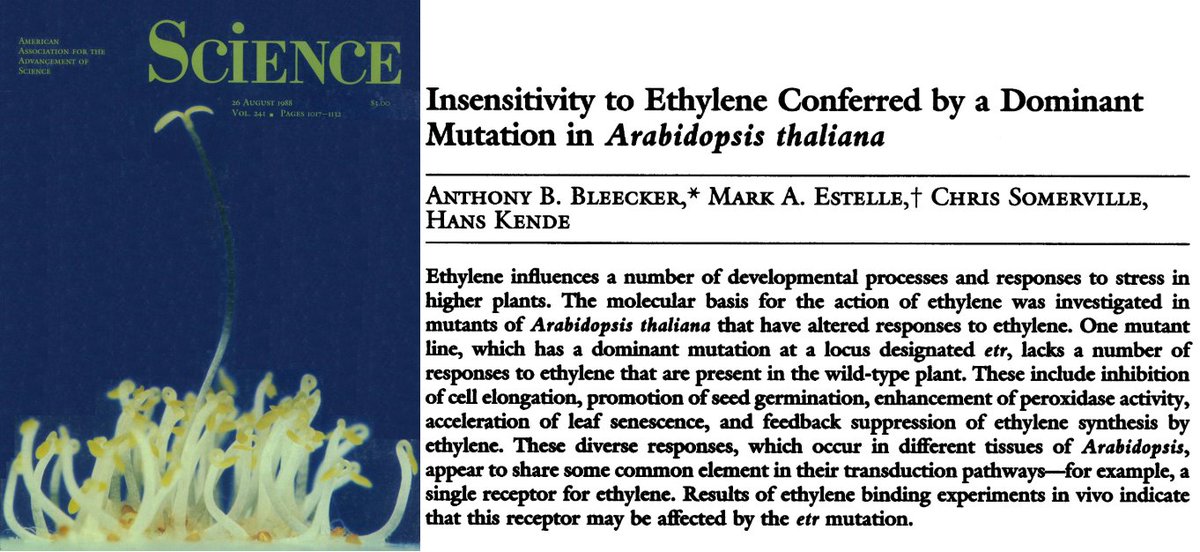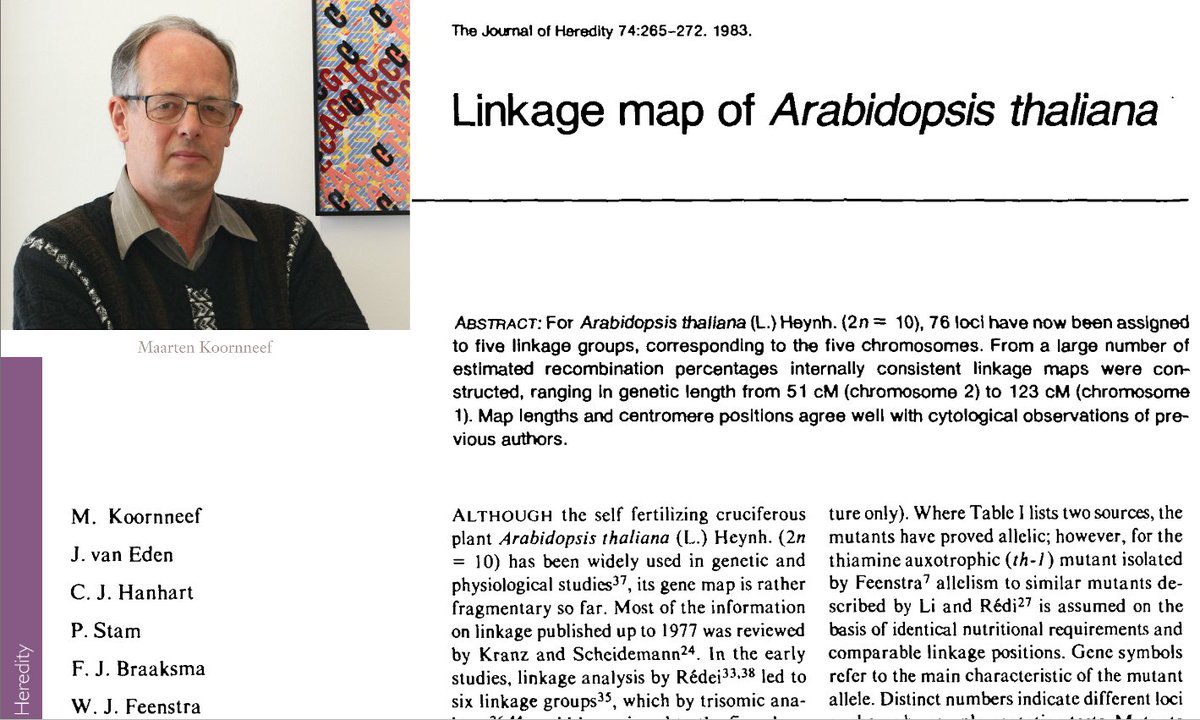#PlantScienceClassics #6: The T-DNA. In a 1977 paper, Mary-Dell Chilton & colleagues identify the Transferred DNA (T-DNA), the bit of DNA that Agrobacterium tumefaciens inserts into the plant genome, to kick off the race toward the first transgenic plant. doi.org/10.1016/0092-8… 

It was known since before the 1940s, that Agrobacterium could induce tumors (‘crown galls’) on plants, & that these tumors then grow autonomously of the bacterium, meaning that the plant had been permanently ‘transformed’. But the molecular details for the process were not known. 

Armin Braun already speculated in 1947 that DNA may be involved in this transformation process. But research really took off in 1967, when Rob Schilperoort showed that Agrobacterium RNA could hybridize with crown gall DNA,indicating that bacterial DNA had indeed been transferred. 



This paper was also what got Mary-Dell Chilton interested. She had previously pioneered a new, more sensitive DNA-hybridization technique, which she intended to use identify the transferred DNA. However, she failed to detect any agrobacterial chromosomal DNA in the plant tumors.
The explanation came in 1974, then Ivo Zaenen from the joint lab of Jeff Schell & Marc van Montagu identified a giant extra-chromosomal plasmid in oncogenic Agrobacterium strains: The Ti-plasmid. Mary-Dell Chilton had tested the wrong plasmid in her experiment. 

But when she repeated her experiment with Ti-plasmid DNA, she once again was unable to detect it in plant tumor tissue. Frustrated with these failures, Chilton & her lab were almost ready to throw in the towel. But they gave it one last try. 

In a ‘brute force experiment’, the entire lab worked over 60 hrs to chop up the entire Ti-plasmid into little bits, which they all tested individually for complementary sequences in tumor DNA. All this at a time, when molecular biology was still in its infancy. A tremendous feat! 







By 1977 they had succeeded in identifying the exact bit of DNA within the Ti-plasmid transferred into the plant cell: The T-DNA. The resulting @CellCellPress publication started one of the most exciting developments in plant biology: The race toward the first transgenic plant. 

I describe the race toward the first transgenic plant in detail and with all references in my ‘Short History of Plant Transformation’: doi.org/10.7287/peerj.…. Spoiler: It ended in 1983, with a photo-finish, and publications on transgenic plant lines from four labs.
The first 2 came from the Chilton & Schell/van Montagu labs, both in @Nature, then Monsanto followed in @PNASNews & the Hall lab at the end of the year in @ScienceMagazine. (1)doi.org/10.1038/304184… (2)doi.org/10.1038/303209… (3)doi.org/10.1073/pnas.8… (4)doi.org/10.1126/scienc… 

The development of plant transformation revolutionized #PlantSciences, was vital to kickstart the field of #PlantMolecularBiology, and launched the #PlantBiotechnology sector. And, remarkably, the race was competitive but fair, with high-profile papers for all involved! 

Further reading: Two autobiographical pieces by Mary-Dell Chilton on the time: My Secret Life: doi.org/10.1146/annure… Agrobacterium. A Memoir: doi.org/10.1104/pp.125… Another by Luis Herrera-Estrella: doi.org/10.1111/pbi.13… and a book by Judith Heimann: doi.org/10.3920/978-90… 

• • •
Missing some Tweet in this thread? You can try to
force a refresh




















